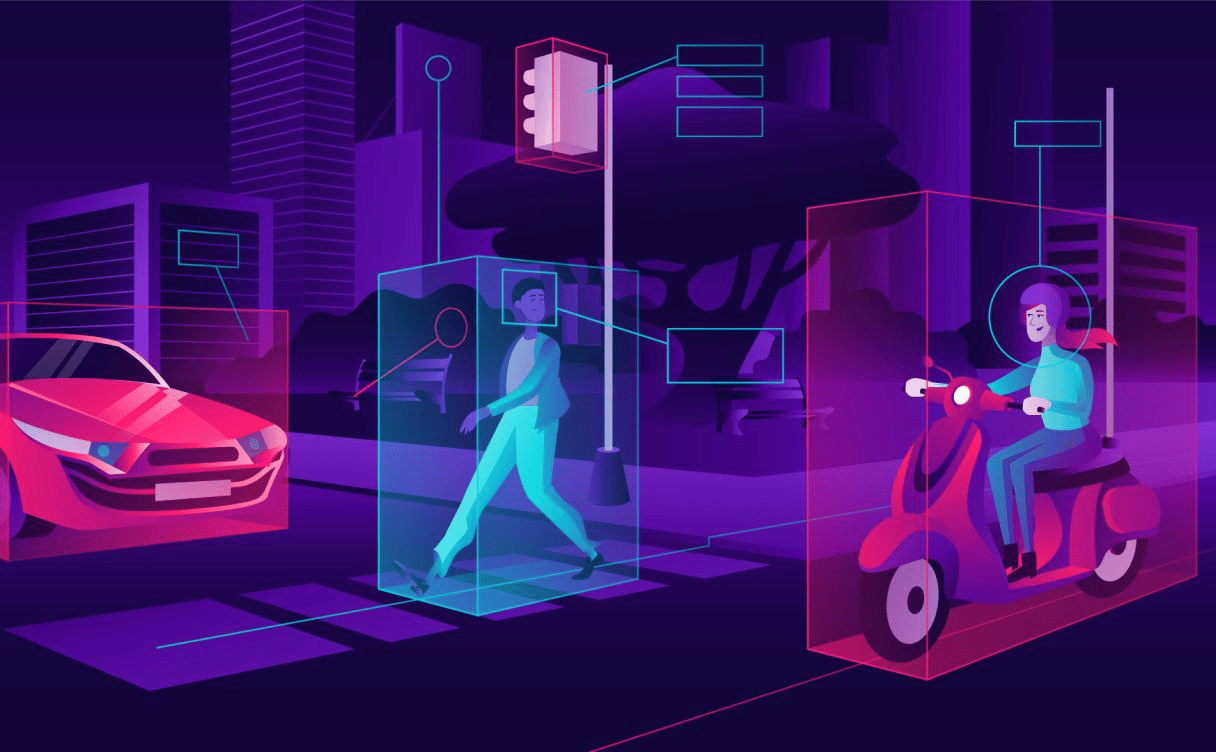
How Sustainable is AI?
Do generative AI's benefits for the planet outweigh its impacts? Let's try to find out...
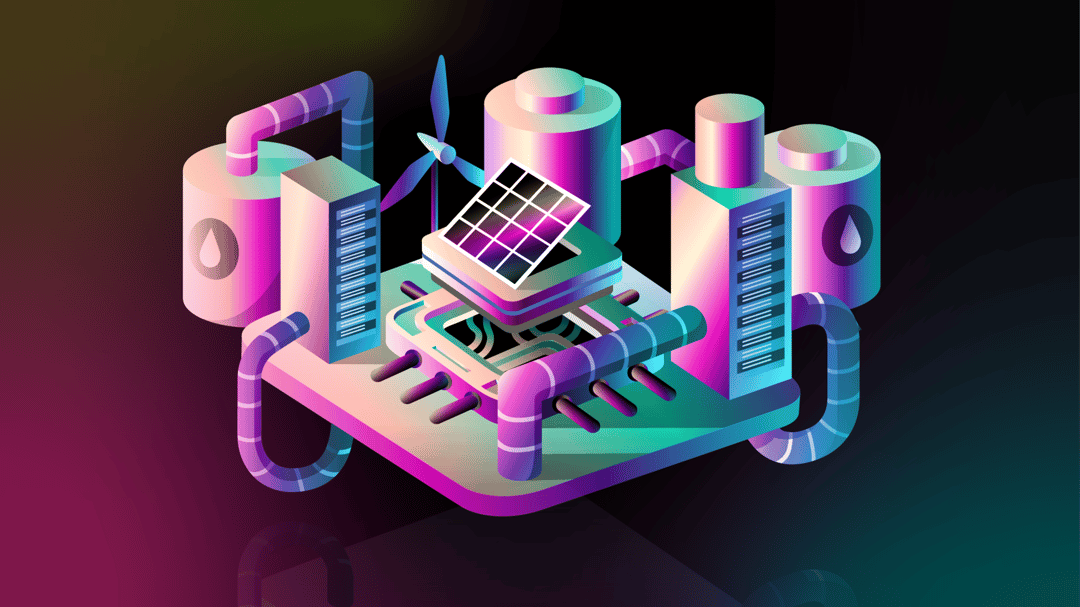
It’s often said that if you can’t measure it, you can’t improve it. Increasingly in tech today, if you can’t measure it, it’s most likely greenwashing.
Take, for example, the recent “Greening Digital Companies” report, a survey of 200 of the world’s biggest tech companies. It says that, whilst scope 3 emissions - any company’s least direct ones, and therefore the hardest to measure - represent 81% of tech companies’ emissions, only 38% of said firms report scope 3 properly. That’s well over half of all tech emissions totally unaccounted for.
Or the recent report by The Guardian, which estimates that data center emissions are probably 662% higher than big tech companies claim, because they are not reporting the right kind of data.
Another interesting example is Accenture’s claim that moving from on-premise to the cloud can reduce your emissions by 84%. Possibly... but only if:
So let’s take a look at all three!

If we consider that 4% of all global emissions are digital, 1% of those four comes from data centers, according to the International Energy Association (IEA). But this is just for starters. Also according to the IEA, AI, data center and cryptocurrency energy use
will double by 2026, as the demand for compute power surges worldwide.
It is as such essential to limit data centers’ impact. Whilst the first way to do that is to choose countries with the lowest-carbon electricity (cf. introduction), you can then check how efficiently your chosen cloud provider (CSP) uses energy. This is measured with Power Usage Effectiveness, or PUE. As it’s a ratio, the closer it is to one, the better it is (cf. examples, above).
However, that’s not all ! Many CSPs proudly share their low PUEs without sharing their WUE, which is how effectively they use water. Whereas both should be as low as possible, but water usage figures are far harder to come by than energy-related ones. This is because some datacenter cooling techniques, like cooling towers, can use inordinate amounts of water: some around 25 liters of water per second.
As such, when choosing your CSP, it’s essential to ask for:
By far the biggest share of digital emissions - around 75%, or 3 of the 4% mentioned above - comes from hardware (source). So it’s clear that limiting hardware’s impact has to be a top priority. How? Firstly, this has to happen across all stages of products’ existence:
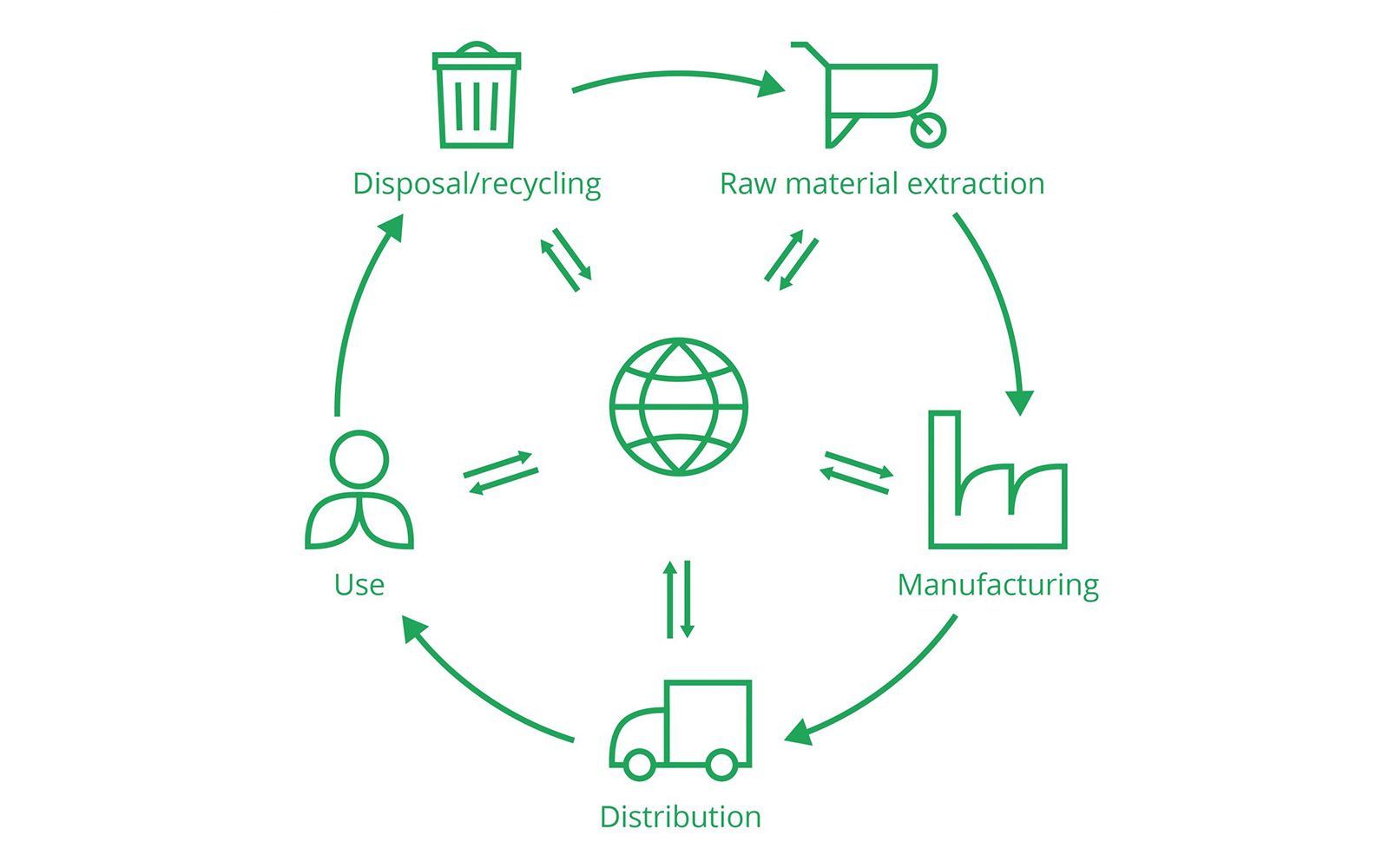
Devices’ Lifecycle Analysis, or embodied carbon, can be measured with tools like that of Boavizta, a global reference made in France. Then their usage impact can be measured with:
So how do you reduce the impact of hardware, the monster in the room? By making it last for as long as possible! To take a simple example, if most people only keep their smartphones for two years, by keeping yours for three, you’re reducing its overall emissions by 50%.
When it comes to the cloud, those CSPs who make their servers last the longest do the most to reduce their hardware impact. Whereas previously, most data center servers were binned after 3-4 years, some hyperscalers can now go for four to six years (cf. table below, from AdVaes), Scaleway makes its servers last for ten years and beyond, thanks to programs such as Transformers (below, and more info here).
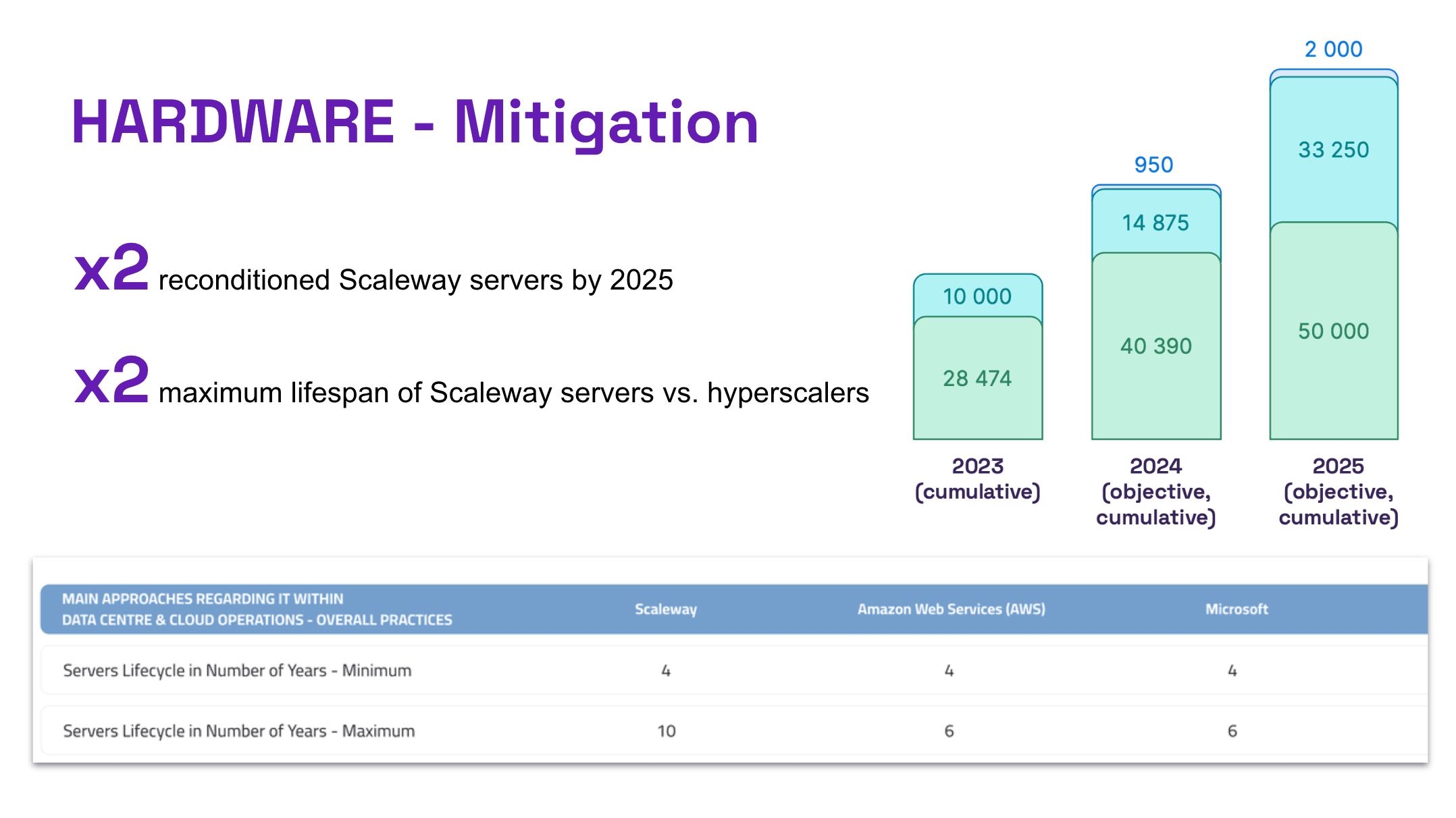
Since the industrialization of such programs last year, Scaleway has been able to double its number of reconditioned servers and hard drives: as such, nearly 80,000 should have been reconditioned by 2025. Thereby removing the emissions generated by making new servers, the cost of acquiring them, and reducing e-waste (today’s fastest-growing waste category). Repair, don’t replace!
While it’s harder to quantify the impact of code and software than that of data centers or hardware, it’s safe to say it’s felt everywhere. In data centers, for example, Intel estimates that 50% of emissions are due to under-optimized infrastructure and software.
Furthermore, the “bloatware effect” is everywhere. Be it in software, where widely-used applications such as Microsoft Office demanded 171 times more memory for the 2019 version than for the 1998 version; or in the average size of web pages, which has grown by 191% since 2013. Are these things 171 times or 191% better than they were 10-20 years ago?
So what can developers do to make a difference? Well, they can start by asking their managers why they don’t have energy efficiency or other sustainability objectives in their own projects!
Then they can consider the following:
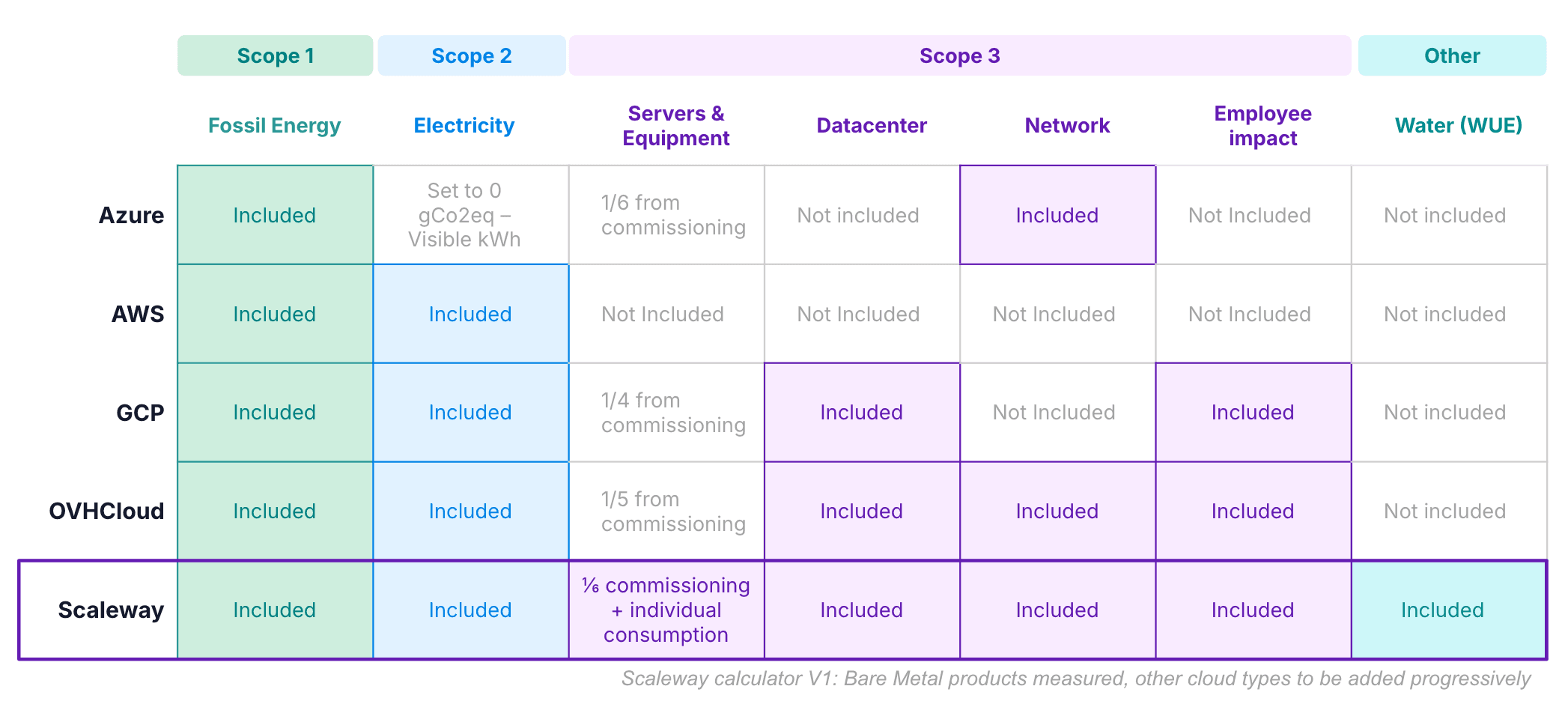
What can your cloud provider do on this front? It can and should provide software that enables you to measure the impact of your own cloud usage. This is precisely what Scaleway’s new Environmental Footprint Calculator (now in private beta) does, but in a more transparent and comprehensive way than other cloud calculators currently available (cf. above). Whilst others concentrate on carbon emissions, Scaleway’s will also cover water and hardware impact, and will be able to measure the latter in terms of individual hardware usage, rather than by applying average impacts across all users.
The other elephant in the room since it caused both Microsoft and Google to miss their emissions reduction objectives recently, the rise of generative AI and LLMs has also raised a few environmental eyebrows. Why? Because GenAI relies on GPUs for training and (a lot of) inference, and GPUs consume on average four times more energy, and generate 2.5 times more heat, than CPUs. Whence the need for more energy, both to power said GPUs (Three Mile Island, anyone?), and to cool them.
Indeed, generating 100 words with ChatGPT (powered by GPT4) can require up to 1.5 liters in terms of cooling water (source, versus 0.5L for 20-50 prompts previously (with GPT3.5) (source). And that update to GPT4 is obligatory.
Not to mention emissions: training GPT3.5 generated an estimated 552 tCO2e, and its inference emissions could be 200x greater - (source), given ChatGPT’s millions of daily users.
Whence the following questions to ask, if you’re looking to reduce your AI impact:
In conclusion, whatever your workload, from bare metal to AI, the key principles of green IT are always the same: measure transparently and comprehensively, in order to use as little resources as possible. In short:
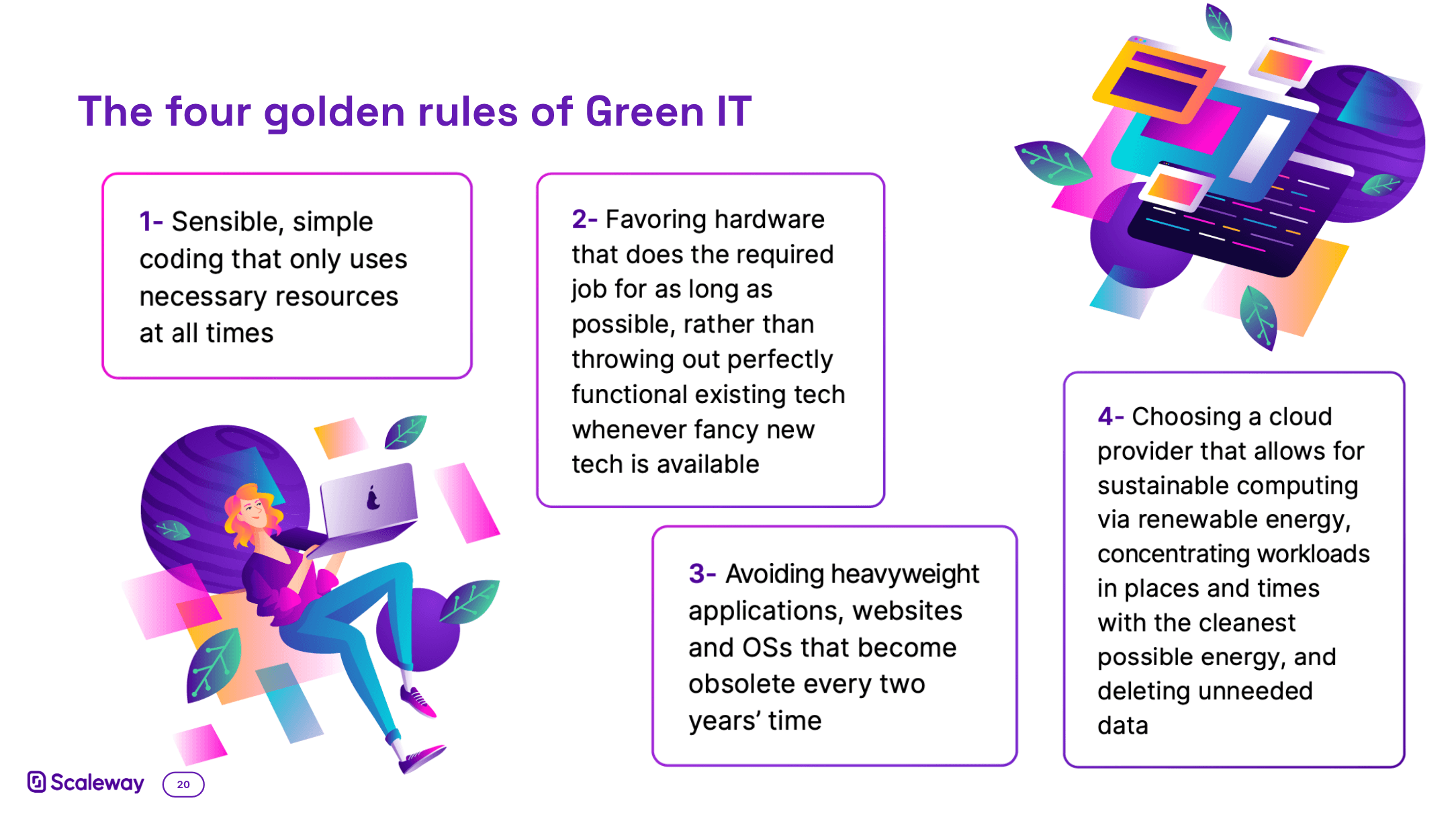
Thanks for reading!
To find out all of the above principles in more detail, you can download our Green IT white paper here; and/or watch this blogpost as a presentation, below. We aim to please!
To find out more about Scaleway’s environmental commitments, including our real-time PUE/WUE dashboards, the Environmental Footprint Calculator, Impact reports and more, click here!

Do generative AI's benefits for the planet outweigh its impacts? Let's try to find out...

The digital sector generates 4% of global greenhouse emissions. Data centers and hardware are the main contributors; but they all run on code, written by developers. How can that impact be reduced?

What is next for Green IT? Regulation, and 2050 carbon neutrality targets, will drive a shift from nice-to-have to must-have. And then there's AI...